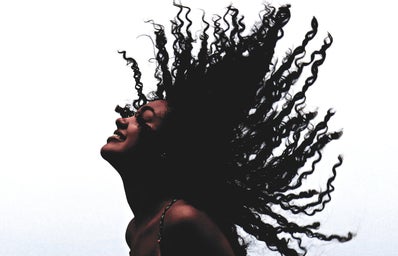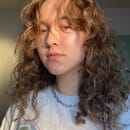I want to begin by recognizing that curly hair is represented through many different types, textures, and sizes, and because each individual is unique, each hair type requires a specific hair care routine that is catered to the individual. While the only background I personally have is with the 3A hair I maintain, it is my goal to, at the very least, provide some direction for my curly and curlier-haired peers who are unsure of where to start.
Hair Types and Subtypes
If I know one thing about taking care of my curls, it’s that what works for someone else’s hair may not work for my hair or routine, and that is completely okay. Finding a balance in hair nourishment is tricky enough, even outside of the dry and cold winter months. Do not feel defeated if you have to undergo a little bit of trial and error before figuring out something that works for you. It is so important to understand every curl is unique in your hair journey.
At a scientific level, curly hair is a dominant genetic trait that occurs as a result of an oval hair follicle shape and a hooked bulb shape. Follicle shape is important in determining hair texture because it is what determines how it will aesthetically grow out. Straight-haired individuals have round hair follicles, and natural hair grows from a flat, oval-shaped follicle. Hair bulb shape also influences hair texture: curly and coiled hair grows from a hooked bulb, whereas people with straight hair may have little to no hook. It is because the hair is coming out of the follicle at an angle, as opposed to vertically down the scalp, that curly hair occurs.
Regardless of its foundation, there is still so much variability in curl pattern and diameter. “Hair typing” is the common practice of categorizing hair textures from 1A to 4C. While hair typing categorizations and charts may be a good place to start in identifying your hair texture, they should be considered with a grain of salt. Curly hair is so personal to the individual and many times may not fully represent the wide variety of curly textures that happen across the world. It is important to consider how categorizing natural, textured hair into simply just the four categories can be restricting for many individuals.
The Importance of Moisture
Depending on the type and texture of your hair, it will lose and retain moisture at different rates. Because curly hair comes out of the follicle at an angle, it becomes more difficult than straight hair for natural oils to spread evenly throughout the hair. As the hair is exposed to the winter environment, it becomes further stripped of its natural oils. By developing a hair routine, you can protect your curls and keep them hydrated.
Adding some extra moisture into the air through a humidifier is a low-effort and very effective way to nourish your hair during sleep. Some more high-effort steps for curly hair care this winter include creating a wash schedule where you are shampooing your hair less often. In addition to this, introducing natural oils like argan oil into the hair can be very beneficial to battling breakage and brittle hair. A simple apple cider vinegar rinse can be helpful to remove excess dirt from your hair and scalp without breaking down your hair’s naturally produced oils. It is important to try to avoid products with sulfates or alcohols as they are extremely damaging to the hair’s moisture barrier. After all, you don’t want to reverse all your hard hair health work.
Long Term Protection
Curly hair is definitely an investment, and while it does take a little extra love and maintenance, it will all be worth it in the long run. A few habit changes outside of the shower can go far in maintaining the hydration of your hair. Consider stashing your heat products for the time being and replacing them with a microfiber cloth to air dry. Heated hair dryers, curling irons, and straighteners damage the keratin on your hair which allows for easier breakage, whereas a microfiber cloth efficiently dries your hair, reduces frizz, and maintains moisture at the same time. My favorite personal investment is the satin bonnet I use to sleep every night. Not only does it limit the bedhead I usually would wake up with, but it keeps the product from seeping into the pillows during rest and keeps my curls healthy.
While I understand I am by no means a curly hair specialist, I hope this information can provide some guidance for my curly-haired friends who are struggling this winter to keep their hair healthy. It is inevitable that not all curly recommendations are going to work for you due to the nature of individuality. The good news is that there is likely something out there for you that will work; you just need to find it.


